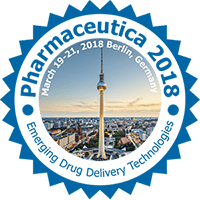
Anselmo J Otero-Gonzalez
University of Havana, Cuba
Title: Chemical derivatives of Cm-p5, a mollusc-derived peptide, enhanced its antifungal properties and improved significantly its antibacterial activity in vitro
Biography
Biography: Anselmo J Otero-Gonzalez
Abstract
Antimicrobial peptides are an essential part of the first line of defence against microbial pathogens in many organisms. Current treatments for fungal infections are limited by drug toxicity and pathogen resistance. Cm-p5 (SRSELIVHQRLF) has a significant fungistatic activity against pathogenic Candida albicans. Cm-p5 was characterized by circular dichroism and nuclear magnetic resonance revealed an a-helical structure in membranemimetic conditions and a tendency to random coil folding in aqueous solutions. Additional studies modeling Cm-p5 binding to a phosphatidylserine bilayer in silico and isothermal titration calorimetry using lipid monophases demonstrated that Cm-p5 has a high affinity for the phospholipids of fungal membranes (phosphatidylserine and phosphatidylethanolamine), only moderate interactions with a mammalian membrane phospholipid, low interaction with ergosterol, and no interaction with chitin. Adhesion of Cm-p5 to living C.albicans cells was confirmed by fluorescence microscopy with FITC-labeled peptide. In a systemic candidiasis model in mice, intraperitoneal administration of Cm-p5 was unable to control the fungal kidney burden, although its low amphiphaticity could be modified to generate new derivatives with improved fungicidal activity and stability. Chemical and sequential derivatives have been synthetized to enhance the antimicrobial spectrum of Cm-p5. A cycled derivative (cys-cys Cm-p5) improved the minimal inhibitory concentration of the parental peptide from 10 to 5 µg/mL against Candida albicans. Cys-Cys CM-p5 was not toxic for human macrophages, the major host cell for the bacterial pathogen M. tuberculosis. Antimicrobial activity against extracellular, virulent M. tuberculosis reached >80% at 300 µg/ml concentration and was nearly as efficient as the first line antimicrobial drug rifampin.

